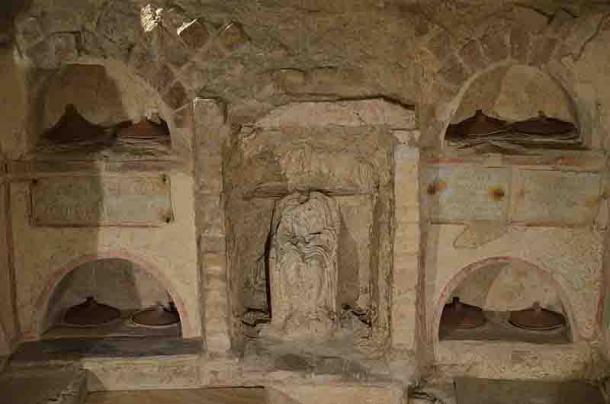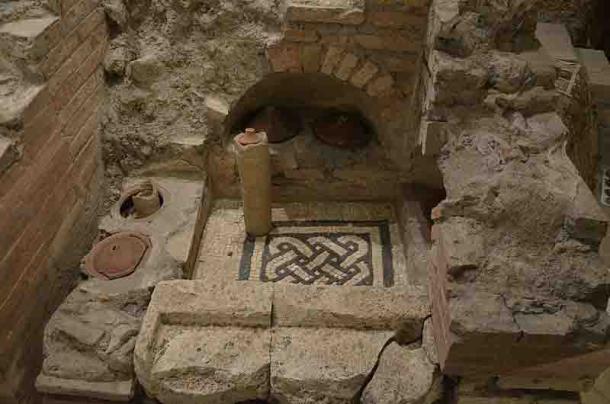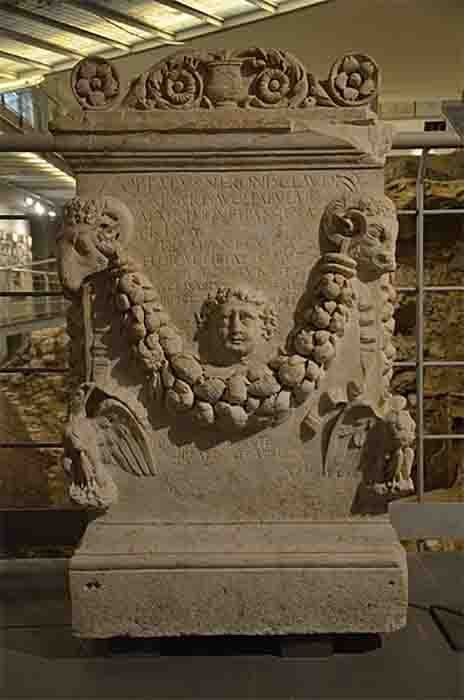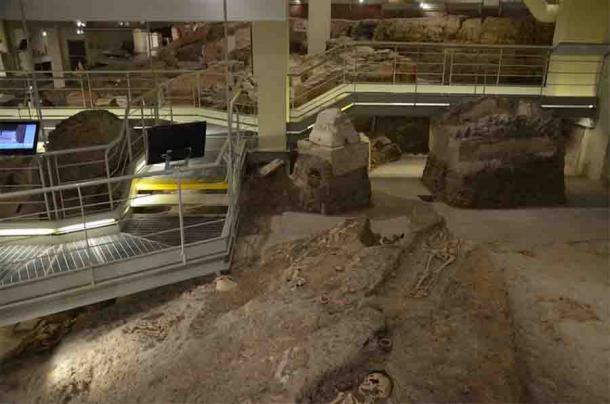Beneath Vatican City, excavations of a Roman era necropolis have revealed fascinating details about Roman burial rituals and funerary practices from the first through to the early fourth centuries AD. Archaeological work in the Santa Rosa necropolis, or Necropolis of the Via Triumphalis , has been going on since 2009, and so far approximately 250 graves inside more than 40 tombs have been discovered.
The Necropolis of the Via Triumphalis was constructed on the outskirts of Rome, on a sloping hillside that ran along a major thoroughfare that led into and out of the city (Via Triumphalis was the name of that ancient road). It was the normal practice in ancient Rome to place cemeteries along roadsides, in locations that were easily accessible yet outside city limits.
What is especially unique about this cemetery is that those who were buried there were poor and middle-class Roman citizens , as well as slaves and freedmen. Historians who study ancient societies often struggle to find detailed or accurate information about the lives of common people, and this is why archaeologists have been so eager to explore the Necropolis of Via Triumphalis, searching for buried nuggets of information about how the other, less fortunate half once lived.

Cremation burial urns at the necropolis of the Via Triumphalis, Vatican City. (Carole Raddato / CC BY-SA 2.0 )
Sorting through the organized chaos of the ancient city of the dead, archaeologists have unearthed well-preserved individual and family tombs that contain highly realistic funerary portraits , intricately sculpted sarcophagi bearing the names of the dear departed, inscribed stelae revealing details about their lives, and personal artifacts and burial objects left in remembrance by visiting loved ones.
“The necropolis of Santa Rosa is one of the best-preserved burial sites of the Roman world and contains a treasure trove of the life of the ancient Romans ,” Leonardo Di Blasi, who manages the necropolis site for the Vatican Museums’ Department of Greek and Roman Antiquities, told the Jerusalem Post .
“In this graveyard we have found the burials of ordinary men such as postmen, bakers, blacksmiths, fountain makers, ambassadors and members of a team of the charioteers that competed in the circus.”

Cremation was a more expensive option. (Carole Raddato / CC BY-SA 2.0 )
Burial Rites and Funerary Practices in a Society in Transition
One interesting aspect of the cemetery is that it was used during a time when Roman society was undergoing a profound spiritual transition.
“The burials not only shed light on the transition of burial practices, such as the passage from cremation to the less expensive practice of inhumation [burial], but the funerary rites also express the hopes and superstitions of the deceased at a time when the Romans stopped believing in the Olympic gods ,” said Giandomenico Spinola, the head of the Department of Archaeology of the Vatican Museums and the current director of excavations at the Necropolis of the Via Triumphalis. “So they were left uncertain [how to] trust their expectation of an afterlife to new philosophies or old superstitions.”

The Via Triumphalis Necropolis includes a variety of different burial practices, from sarcophagi, to urns, to holes in the ground. (Carole Raddato / CC BY-SA 2.0 )
One gravesite that highlights the nature of the impending transition belonged to a young man named Publius Ceasilius Victorinus, who passed away at the age of 17 in the mid-third century. Entombed beside four other members of his family, Victorinus’s sarcophagus features striking images of exuberant dolphins swimming and leaping about in the ocean. In the ancient world dolphins were identified as messengers of the Greek god Poseidon, and one of their responsibilities was to accompany newly deceased souls to the underworld.
But in this case there was more to the story.
“Victorinus was buried at a time when Christianity was spreading in the Roman Empire ,” Leonardo Di Blasi explained. “Interestingly, the iconography of the [Victorinus family] sarcophagi displays both pagan and Christian elements. For instance, the figures of the dolphins are symbolically transformed into Christ, who leads the dead to the “safest shores” of the sky.”
Providing more evidence of the religious leanings of the deceased and his family was in image on Victorinus’s sarcophagus that shows a female figure with her arms raised high in prayer. In the iconography of the church, such an action would represent the commitment of a person’s soul to Christ.

For some of the less well off, a simple hole in the ground was the cheapest option. (Carole Raddato / CC BY-SA 2.0 )
The Importance of Upward Mobility and Social Status in Ancient Rome
The tombs and their contents, decorations, and inscriptions show that even the most modestly born residents of Rome were quite status-conscious, and that they enjoyed just enough opportunity for upward mobility to make that preoccupation understandable.
One important discovery at the Santa Rosa necropolis was a tomb that contained a pair of stelae (altars) dedicated to members of the extended family of Tiberius Claudius Optatus. Inscriptions and portraits pay tribute to Optatus’s deceased wife, daughter, and brother-in-law, who, like Optatus, had all been freed from slavery at some point in their lives.
Despite his apparently lowly origins, the inscriptions at the family tomb disclosed that Optatus had served as the official archivist for the infamous first-century emperor Nero . This was a position of fairly high status, and not surprisingly Optatus and his loved ones were apparently all quite proud of his achievement.
Near the Optatus family tomb was another funerary building that revealed the possibility of upward mobility during the time of Nero. This site was dedicated to a slave named Alcimus, who despite existing in a state of bondage was still selected by Nero to carry out maintenance work inside the prestigious Theatro Pompeiano. By erecting a monument in his honor, after collecting what little resources they must have had, proud family members made certain that word of Alcimus’s connection to the Roman emperor would be passed down to posterity.
The Necropolis of the Via Triumphalis Welcomes You
After years of uninterrupted digging, the Necropolis of the Via Triumphalis was opened to the public for the first time in 2014.
Tours of the necropolis actually begin inside the Vatican Museums, before taking visitors outside onto normally prohibited streets of Vatican City . The tour pathway is lined with display cases that feature artifacts and remains found during the most recent excavations, and with multiple interactive screens that offer three-dimensional reconstructions of the various burial sites and structures. Visitors can also watch short films that provide additional historical information about the necropolis and the people who built it, and teach them more about the archaeological methodologies that been applied to explore, restore, and preserve this astounding ancient site.
Top image: Marble funerary shrine with the four-year old child Tiberius Natronius Venustus found at Via Triumphalis necropolis, Vatican City. Source: Rome Guide
By Nathan Falde
Related posts:
Views: 0
 RSS Feed
RSS Feed

















 February 5th, 2021
February 5th, 2021  Awake Goy
Awake Goy 



 Posted in
Posted in  Tags:
Tags: 
















